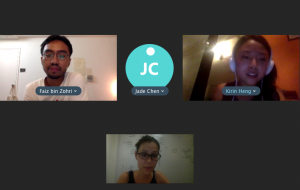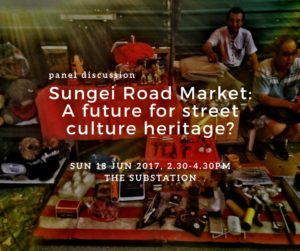THE FOLLOWING EXCERPT IS FROM OUR SKYPE CHAT BETWEEN FAIZ BIN ZOHRI, AND MELANIE CHUA, JADE CHEN AND KIRIN HENG ON 18 JULY 2017. THIS CONVERSATION LOOKED AT FAIZ’S RECENT WORKS IN URBAN FARMING AND THE FUTURE OF SUNGEI ROAD MARKET, AND IS PART OF THE ARTIST-WRITER PAIR SERIES.
READ MORE IN BRACKMAG ISSUE 4: THE ENERGY ISSUE.
We never talked about sustainability. The plan to place greenery in the middle of the CBD was to experiment with seeing if people would slow down.
M: How did your project SG Farm with TANAH for Archifest 2016 provide an antidote to the fast-paced life of the CBD?
[Editor’s note: For project SG Farm that was part of Archifest 2016, he built with TANAH (the collective consisting of himself, co-founder of Foodscape Collective Ng Huiying and founder of pop-up farming project Growell Michelle Lai) a makeshift farm in the middle of Raffles Place. The project drew a wide variety of people for the farming itself, as well as workshops, lectures, dialogues and informal chats.]
F: It’s weird to have a farm in the middle of the CBD. There was no water point, so we had to draw pails of water from the MRT toilet. During rush hour, it was a great contrast of activities: office workers and people just trying to make the plants stay alive. We did talks and giveaways, simple things to engage people. But it was refreshing to do those during rush hour in the CBD.
We never talked about sustainability. The plan to place greenery in the middle of the CBD was to experiment with seeing if people would slow down.
We were there for a week or so even before the Archifest. The office workers were interested, but the cleaners too. In between and before their shifts, they’d sit around and interact with us. During the weekends, it’d be all these shift workers like the aircon guys etcetera. We didn’t expect these people.
Some of them were curious, when we give out plant cuttings. But some would return and ask why theirs died. That gave rise to discussions on how to grow and how to keep plants. We never talked about sustainability. The plan to place greenery in the middle of CBD was to experiment with seeing if people would slow down.
Landscape can show you another rhythm because plants have their own speed. It’s a struggle with national parks. Things die and things grow, and we have to work with that. For public garden projects, the client, whether director or operational manager and the contractors, may have started off as kancheong, but throughout the 1 to 2 years, as the project comes to fruition, you can see them relax.
After a couple weeks, the people warm up to the space. The goals we were interested in for the project was to see if people slowed down and the fest theme, which was ‘breathe’.
While we were not explicit about promoting urban farming, the discussions definitely went that way:
There’s an argument that if you plant things at home, you may become slower. But not quite, I’ve seen for example, my worms are not composting fast enough! A farmer’s life is not relaxed either! There’s a nostalgia about farming. Maybe if you’re a privileged farmer!
If there are no differences in thoughts regarding it, that public space would be a dead space. (…) Harmony only comes about when different communities can accept one another’s logic of how to use a space: the use of a space involves forever a negotiation of things.
J: Could you tell us a little more about your passion for Sungei Road Market? [Referring to project A Concept Plan For Robinson Petang 2.0 which was part of the Sungei Road Market Petition]
It’s the first time that I’ve really cared about this. It’s been 50 years of city building and the first cycle of the whole city-nation-building… For example, you see same process in Japan every few decades or so.
Dakota [Dakota Crescent, one of Singapore’s oldest public housing estates] is important as well. And we will keep revisiting this trend. Sungei has confirmed for me that to contest this trend is important. My role there is to do proposals for new locations. Why ignore it when there is a community there for the past 80 years?
J: When you first enter a space, what strikes you the most about the potentiality of that space visually?
F: When I enter, I look for where the sun and shade could be. That’s the only thing that matters first. Only then, I will look at the people who will use it. Recently, I said I think public space should be a common good and not a commodity.
I believe public space is not supposed to be harmonious. If there are no differences in thoughts regarding it, that public space would be a dead space. The government should understand that it has never been one way [especially in relation to the closing of Sungei Road Market]. Harmony only comes about when different communities can accept one another’s logic of how to use a space: the use of a space involves forever a negotiation of things.


